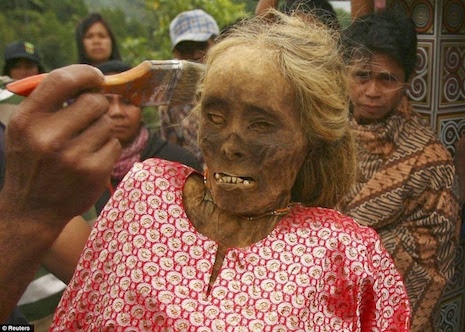
In the May 2, 1994, issue of New York Magazine there appeared an astonishing story by Jeanie Russell Kasindorf about a certain noteworthy discovery in the West Harlem apartment that had previously belonged to Dorian Corey, one of the drag queens who made such an impression in Jennie Livingston’s singular 1990 documentary Paris Is Burning.
In August 1993, three years after the release of Paris Is Burning, Corey died of AIDS-related complications, and her extensive costume collection was passed on to her friend and caregiver, Lois Taylor. As Taylor was sifting through the piles of clothing in Corey’s apartment, she came upon a large trunk containing a mummified body with a gunshot wound to the head. There was little question that the body had been there for some time.
Police identified the body as Robert “Bobby” Worley, who had spent three years in prison for rape and assault in the mid-1960s and had not been seen by his family—or anyone else, for that matter—since 1968. For various reasons (see below) it became apparent that there was a strong likelihood that Worley had been killed between 1968 and 1978. None of Dorian’s associates could recall her ever mentioning Worley, let alone confessing to any crime. There was some speculation that Corey had shot Worley during a failed robbery.
Kasindorf did discover some clues about their relationship: Worley’s brother Fred claimed that Bobby had called him while drunk and had rambled extensively to someone named “Dorian,” having apparently fought with her. Lois Taylor also told Kasindorf that Dorian had written a short story about a transgender woman who killed her lover in revenge after he pressured her to have a sex change. But these loose ends don’t add up to anything like a full account of how Worley died.
Here’s an excerpt from Kasindorf’s article:
“The first thing the body was wrapped with was a Naugahyde-like material,” [Detective Raul Figueroa] said, “with tape around it. It was that cheap brown material that they make fake-leather jackets out of. Then I think there was some other material around it. Then they put it in plastic bags.”
Figueroa said the body was “half-way” between mummified and decomposed. “When you have all this wrapping, no air is getting to it,” he explained. “But it is still losing liquid out of its body. So the body sort of floats in its own soup.” The skin was in very bad shape. “It was like very old fabric,” Figueroa said. “If you touch it, it’s going to fall apart.” Figueroa spent several days treating the skin so he could take ten fingerprints off it.
-snip-
The most exquisite detail I got from Figueroa was the tale of the flip-tops. When they pulled apart all the layers of wrapping, out fell little rings from old flip-top beer cans—the detachable kind that haven’t been used since the seventies. This convinced Figueroa that Bobby Worley died at least 15—maybe as long as 25—years ago.
“The doctor put that it could have been dead one to fifteen years so as not to commit himself until we had all the proof,” Figueroa said. “But given the fact that the brother hadn’t seen him since the late sixties, plus the fact that Naugahyde was popular in the seventies, plus the rings, it was obvious.”
I asked Figueroa if he thought the person who wrapped the body in imitation leather was trying to emulate the Egyptians. I thought it possible that Dorian Corey was into high camp with dead bodies as well as live ones.
“I don’t think so,” he said. “People just wrap a body in whatever’s available. It’s just spontaneous. You wrap it up. Then you put it in a suitcase. Then you put it in the closet. Then you just look at it periodically and wish it would go away.”
Interestingly, according to a user on reddit, Joseph N. Rubinstein and Jason Kim are working on an opera titled Legendary that is about the New York drag scene of the late 1980s and also deals with the mysterious Dorian Corey revelations.
After the jump, read full story from New York magazine…








